A London exhibition reflects on shared South Asian histories and splintered maps
by Samta NadeemJun 19, 2025
•make your fridays matter with a well-read weekend
by Erin LiPublished on : Nov 07, 2024
When I first met Moe Satt eight months ago, I got to know him not simply as an artist, but also as a father of two. He had a cot in his studio and cycled on weekdays to pick up his older child, after recently deciding to move from Yangon to Amsterdam with the whole family. For someone whose life and art are so inseparable, it was the best in-person introduction.
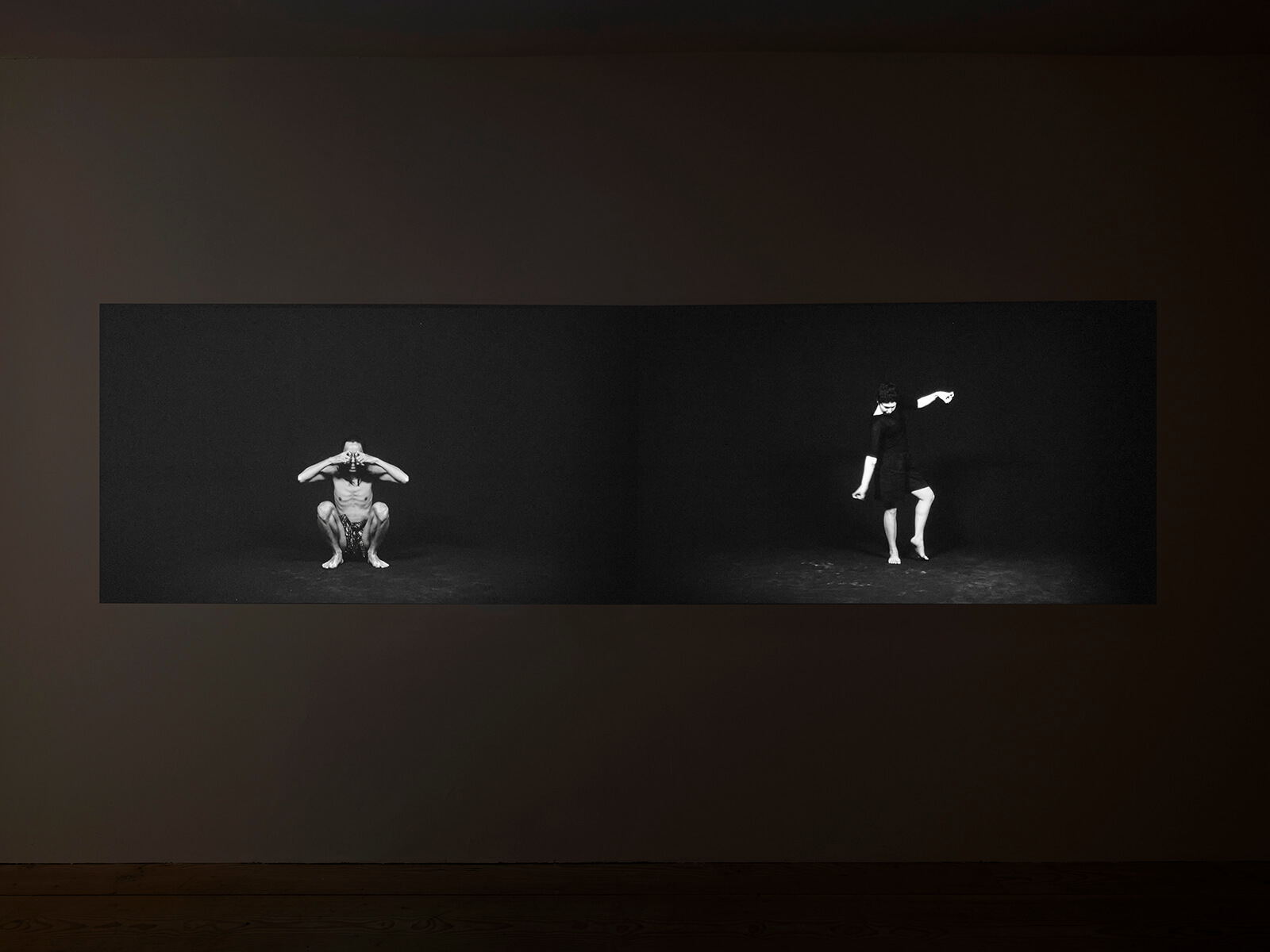
In preparation for Satt’s solo exhibition Rest the Thumbs on the Cheekbones at Delfina Foundation from October 01 - November 17, 2024, I visited him twice in his Rijksakademie studio in Amsterdam, followed by weekly Zoom calls for a few months. We often discussed how to define his practice given the growing art mediums and new modes of collaborative artmaking he has been experimenting with and how to negotiate between his artistic interests versus other people’s expectations of him as a diasporic Burmese artist in Europe. It is by no means a linear journey—there were moments when he noticed that works overtly responding to the political situation in Myanmar seemed to get more exposure internationally in biennales and group exhibitions, and he wanted to focus on less overtly political works to explore other topics and declare his free will. Yet with the military coup that started in Myanmar in Feb 2021 and the mass protests that followed (which led to his imprisonment for three months in the same year), sometimes he can’t help but express concerns about the political climate in Myanmar and articulate resistance through art making. Through conversations with some art friends, I also found out that despite Satt’s wide range of artistic practice over the past two decades, he seems most known as a performance artist focusing on the political struggles in Myanmar.
To what extent could we relate to others across bodies, contexts and histories?
Meanwhile, frenzy takes over the world we inhabit—whether related to wars and genocides, or the Olympics and the Euro tournaments. It is in this context that we conceived the exhibition and hoped that a wide range of audiences residing in or visiting London could relate in their own way. Rest the Thumbs on the Cheekbones, Satt’s first solo exhibition in Europe, brings together a new commission alongside recent and early works in conversation to showcase his dynamic and relentless explorations of resistance, embodiment and empathy. Some works draw from the recent social-political turbulence of Myanmar and wrestle with oppression and censorship. Others further reveal the vigour of Satt’s practice, especially his attempts to expand the notion of embodiment through performative instructions, group performance and interactive installations developed since his three-month residency at the Delfina Foundation back in 2020.
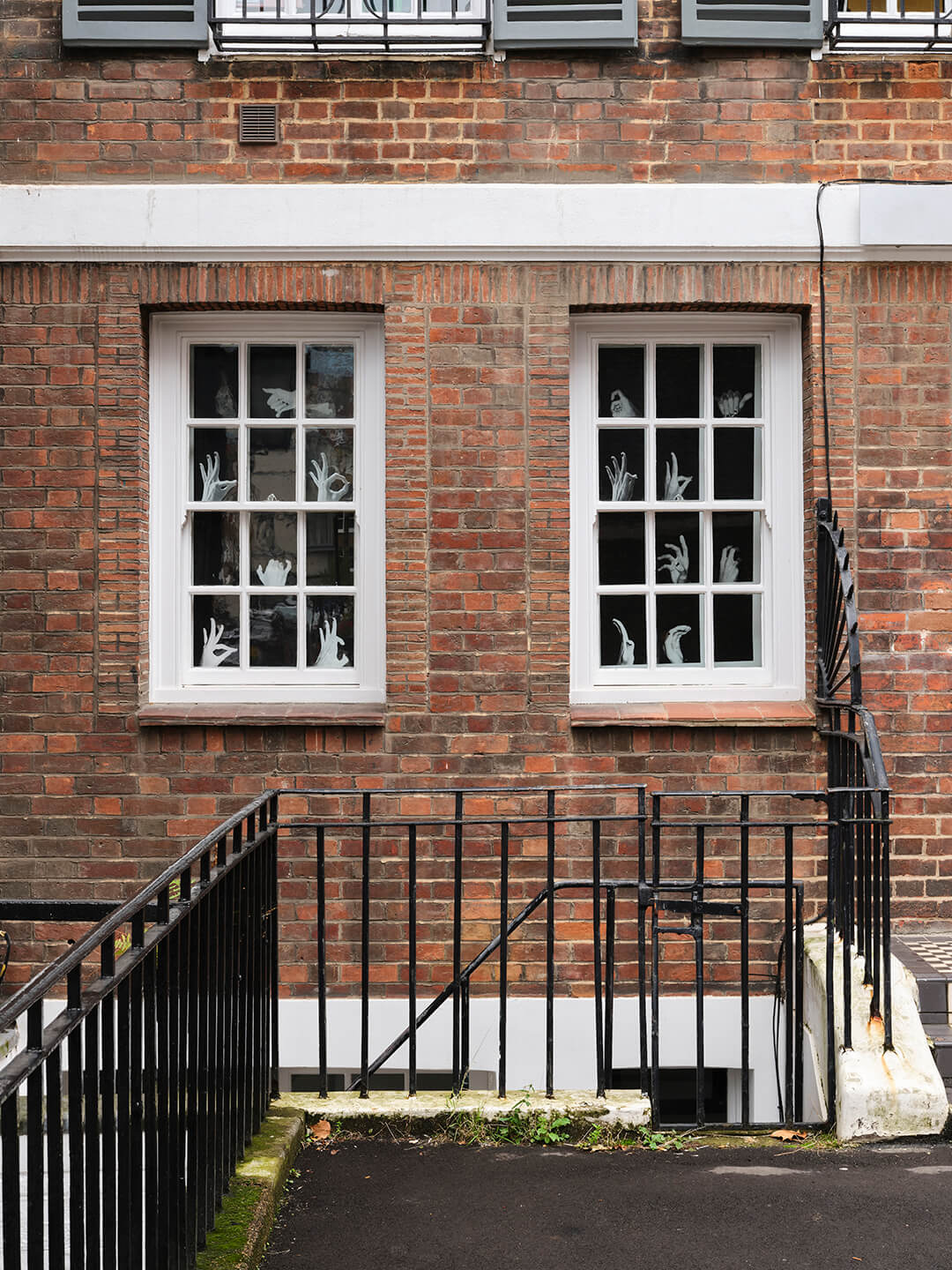
Upon walking towards the entrance of the Delfina Foundation, visitors are greeted by the site-specific commission Hunting and Dancing (2024). Monochromatic photos of Satt’s hands interpreting gestures used in African hunting cultures and those used in Burmese folk dances are silkscreened onto blinds pulled down over the entrance window. The animal-related gestures resonate across cultures in a way that could be a beautiful coincidence—or not so coincidental after all? Although the photo series of hands was made back in 2006, the rise of political tensions around certain hand gestures (such as the German city of Bremen banning the “silent fox” gesture in July 2024 due to its close resemblance to the “wolf salute”, which is controversial for its links to ethno-nationalism in Turkey), Satt’s work reminds us of the often complex, multiple histories behind symbols and their ability to take on new relevance.
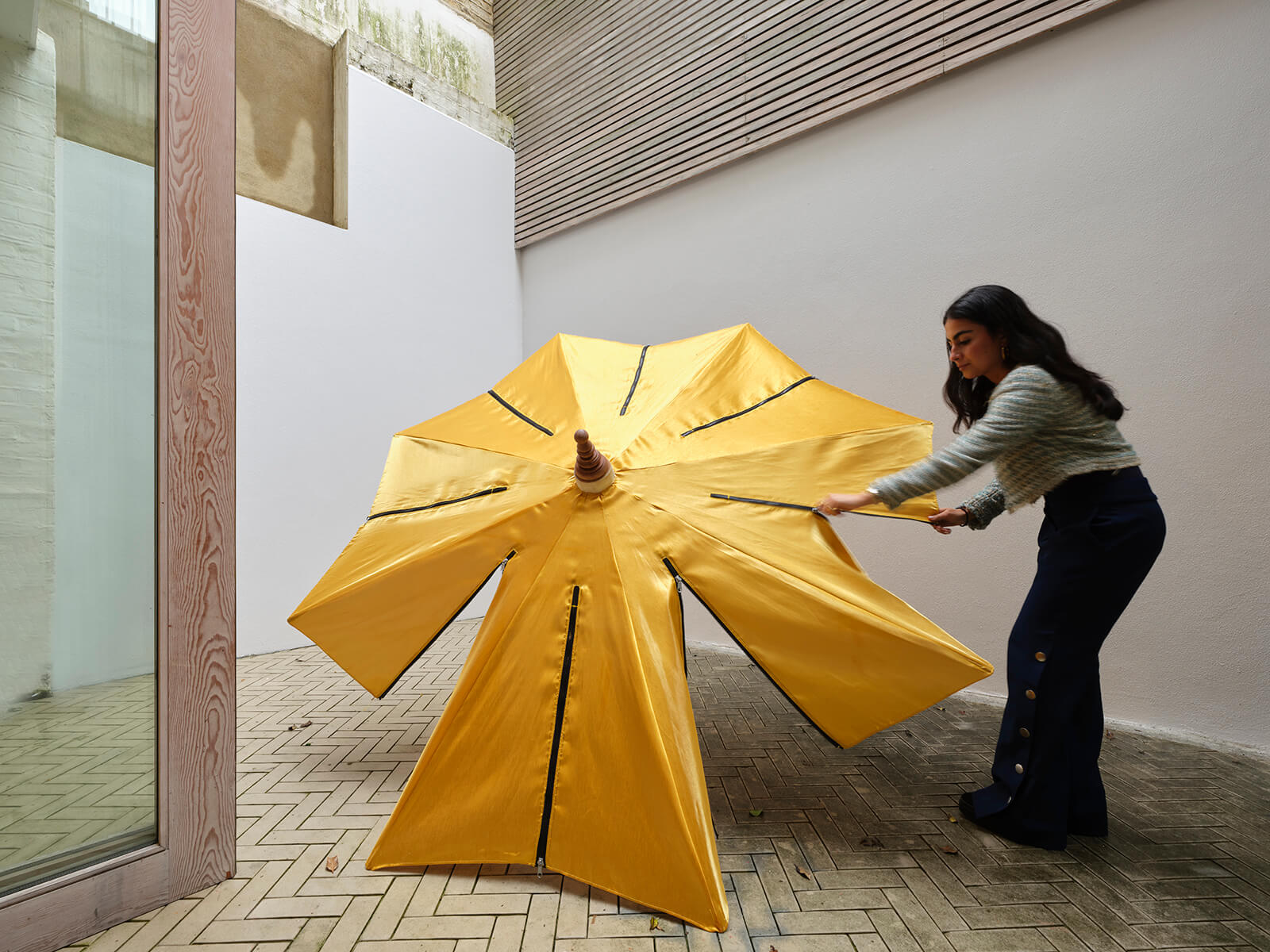
Another personal highlight is Parasol Alternative (remade in 2024), an interactive installation blending critique and playfulness, placed in the gallery courtyard. Satt poses the question, “When you put together pieces of a broken object (or a disintegrating society), can it all go back to normal?”. In creating this work, Satt tore apart a parasol and sewed zippers to rejoin the fabric fragments. Visitors are invited to zip and unzip the parasol as they wish and explore the myriad shapes it may evolve into, for instance, a tree, a cross and a butterfly.
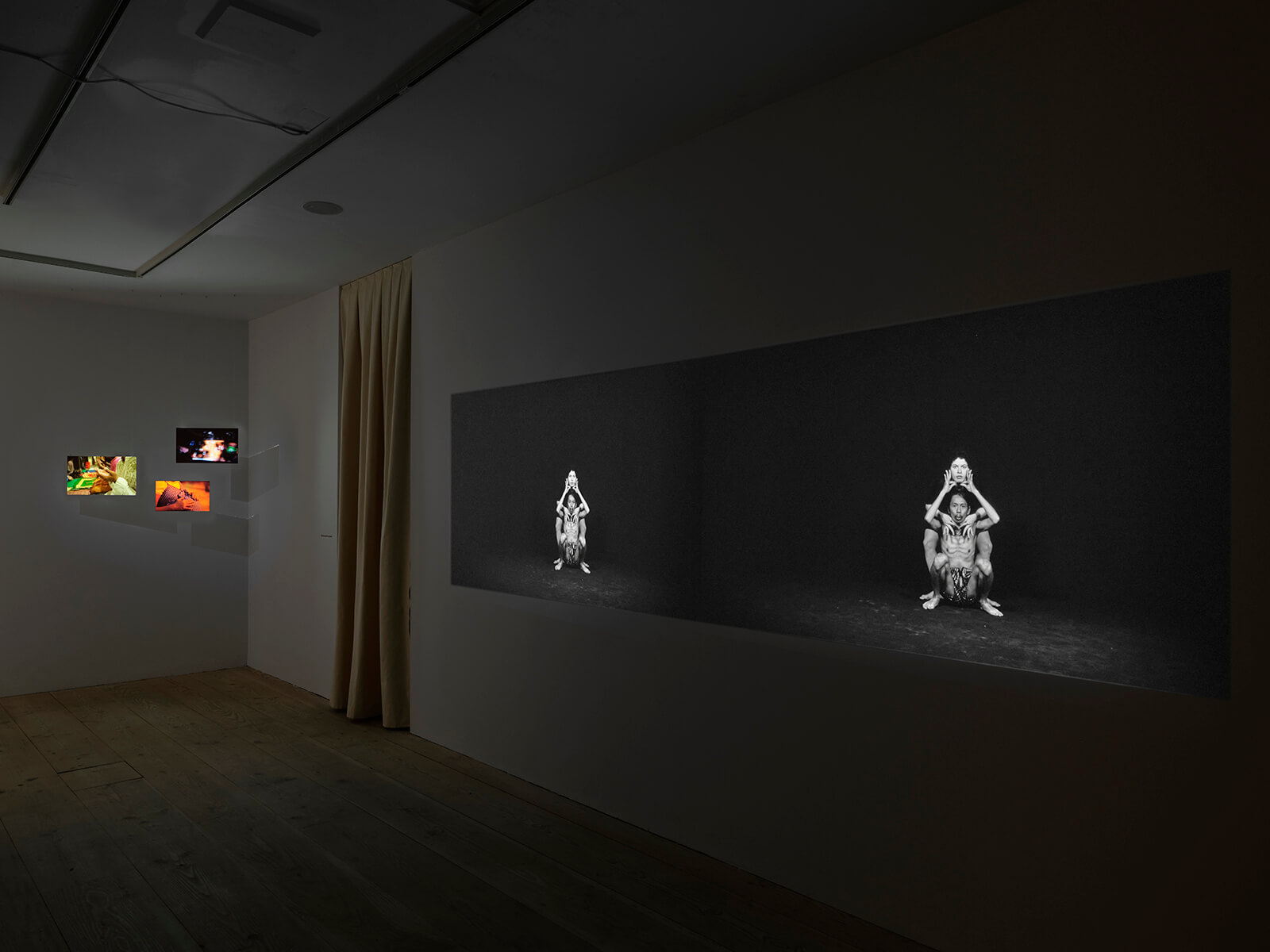
I have been collecting audience feedback and comparing their interpretations of the works with the concepts that drove Satt and me. The life of an exhibition only starts once it encounters its first visitor. Likewise, as a bridge between the artist and the audience, a curator’s job never stops at the opening reception. I find it a privilege to be on the ground to witness the whole life of the exhibition. Sometimes I even feel like a stand-up comedian who polishes a set over and over in various clubs. Observing visitors’ responses while giving exhibition tours helps me understand which aspects of the artworks and the exhibition resonate more deeply. Many visitors expressed appreciation for the three-channel video installation Hand Around In…Series (Yangon, Busan, Jogja) (2012-19), which offers a poetic and comparative study of ubiquitous hand movements of care, labour, leisure and ritual by pedestrians on the streets across three Asian cities. They agree with Satt’s proposition that the kinds of hand movements we see in public spaces are very telling of a particular city’s culture. The fact that Satt never made “Hand Around in London” or “Hand Around in Amsterdam” also urged many to think. He explained, “If I take out a camera and zoom onto people’s hands in London or Amsterdam, I’d get beaten up or pushed out of the tube before I could shoot enough materials to make such video works.”
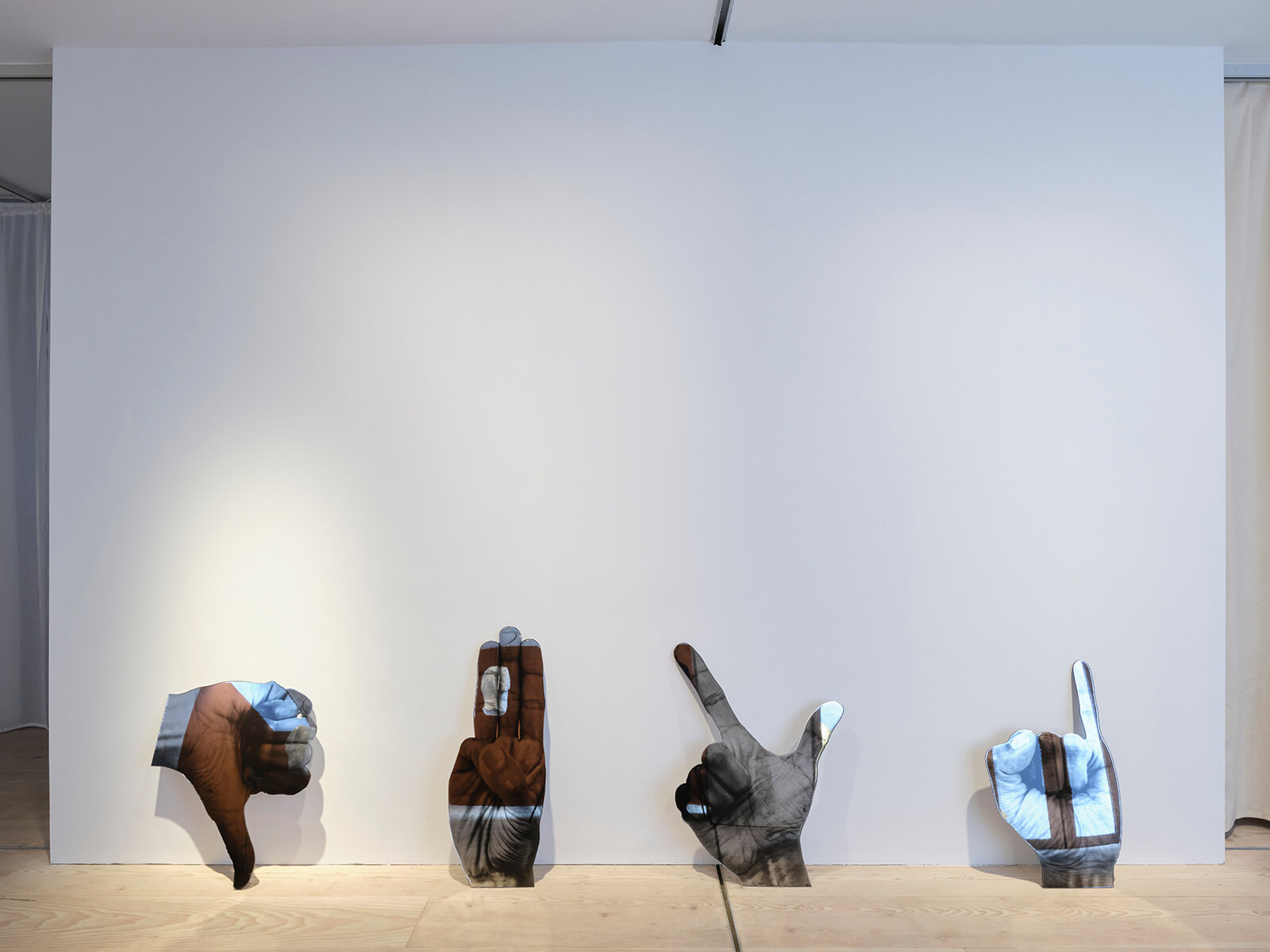
One of the central questions raised by the exhibition which still lingers in my mind is: To what extent could we relate to others across bodies, contexts and histories? Satt’s invitation to audiences from diverse backgrounds to find their own interpretations and reference points is a timely experiment. After all, solidarity could never be a solitary act.
(Disclaimer: The views and opinions expressed here are those of the author(s) and do not necessarily reflect the official position of STIR or its editors.)
'Rest the Thumbs on the Cheekbones' is on view at Delfina Foundation from October 01 - November 17, 2024.
by Shaunak Mahbubani Oct 13, 2025
Collective practices and live acts shine in across, with, nearby convened by Ravi Agarwal, Adania Shibli and Bergen School of Architecture.
by Srishti Ojha Oct 10, 2025
Directed by Shashanka ‘Bob’ Chaturvedi with creative direction by Swati Bhattacharya, the short film models intergenerational conversations on sexuality, contraception and consent.
by Srishti Ojha Oct 08, 2025
The 11th edition of the international art fair celebrates the multiplicity and richness of the Asian art landscape.
by Asian Paints Oct 08, 2025
Forty Kolkata taxis became travelling archives as Asian Paints celebrates four decades of Sharad Shamman through colour, craft and cultural memory.
 surprise me!
surprise me!
make your fridays matter
SUBSCRIBEEnter your details to sign in
Don’t have an account?
Sign upOr you can sign in with
a single account for all
STIR platforms
All your bookmarks will be available across all your devices.
Stay STIRred
Already have an account?
Sign inOr you can sign up with
Tap on things that interests you.
Select the Conversation Category you would like to watch
Please enter your details and click submit.
Enter the 6-digit code sent at
Verification link sent to check your inbox or spam folder to complete sign up process



by Erin Li | Published on : Nov 07, 2024
What do you think?